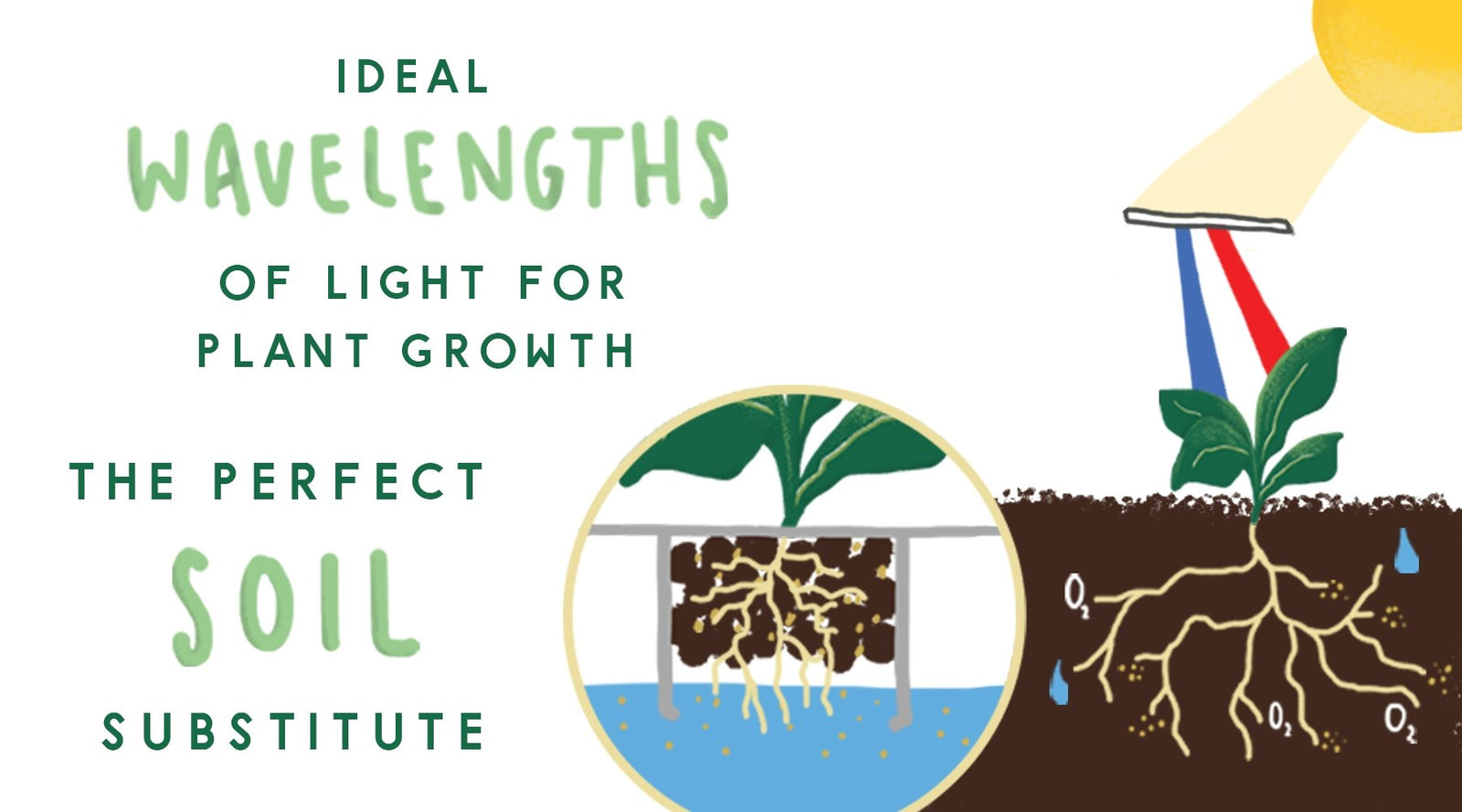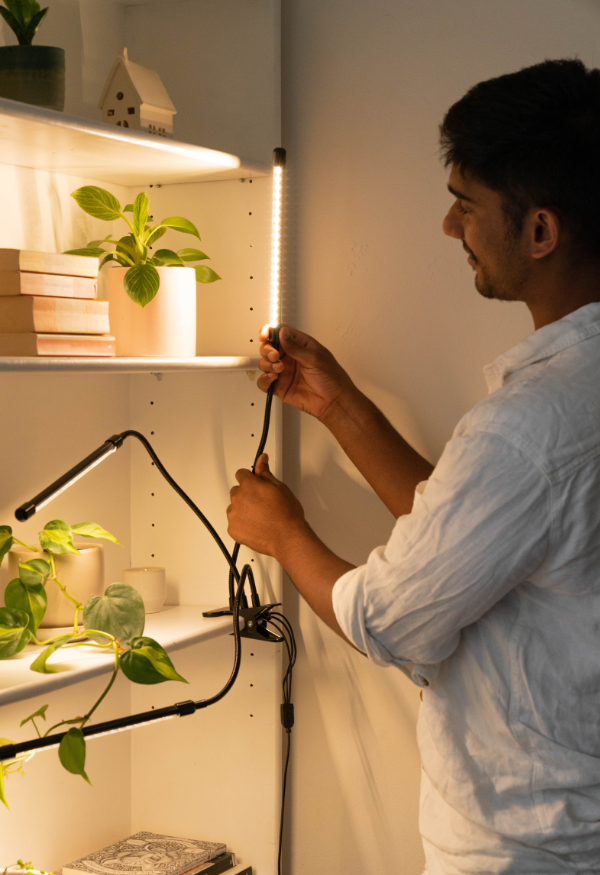Your Cart is Empty
shop
Hydroponics Tech Stuff: Light and Soil
October 14, 2019 3 min read

When you first begin your journey as a hydroponic farmer you may be shocked at how complex it can seem. There are so many terms; micro and macronutrients, humidity, temperature levels, light intensity, PPM, EC, pH, NPK and so on. Though these values are crucial to the industrial grower – for home growers it’s actually super straight forward!
We’re going to break it down into the two main requirements that hydroponics builds on – light and earth.
Sunlight or LED Grow Lights
What is it about the sun that makes plants grow? Most people may correctly answer “Light”, but what is the difference between natural light from the sun and light from the bulb on my ceiling? Why can plants use one and not the other?
Simply put, it’s the specific wavelengths in sunlight that a plant requires to grow. The sun emits an incredibly broad spectrum of light waves, however, most plants only require wavelengths between ~460 and ~600 Nanometers. Our human eyes see these wavelengths of light as blue and red respectively. These small slithers of the electromagnetic spectrum power root growth, and the formation of chlorophyll (the green pigment in plants) - which is a necessary ingredient that converts light energy to plant energy (through photosynthesis).
In short – plants only use a tiny section of the wide range of radiation emitted from the sun. The required wavelengths can be replicated efficiently by grow lights; these artificially provide the wavelengths the plants need.
Soil or a hydroponic growth medium?
Humanity owes its existence to the 6 inches of topsoil that cover our globe and our weather system, eg. rain. But… why? Why can plants grow in soil but not sand? What does soil give to plants that make them grow? And why do modern farmers supplement their soil with industrial fertilisers? The answer can be distilled into three key concepts; Support, nutrients, and oxygen.
Plant support and foundations
The need for support is obvious, how could we build skyscrapers and bridges if not for the hundreds of pylons that we dig deep into the earth to support the building? Just like the pylons of skyscrapers, plants dig roots into the earth to support themselves. But roots do so much more than the cold hard steel and concrete of a skyscraper could ever do.
Nutrients and oxygen
Roots search for oxygen, water, and the main micro and macronutrients that plants need to grow. Healthy soil with an abundance of good microbial life contains all of these things and often just requires a small amount of water to release them from their solid states and into a liquefied solution. In essence, water is the key that releases all of these things from soil – allowing them to be consumed by plants and used to grow.
The result of hydroponics for growth?
When growing things hydroponically – we substitute soil for a growing medium, and nutrients of our own. Having everything plants need to grow readily accessible to them reduces the amount of energy that the plant needs to expend in order to grow their roots and find resources. This results in quicker and faster plant growth. Similarly, by using LED lights we can ensure that plants get the required amount of sunlight that they need to grow – all while enabling people to grow food in places that could conventionally never be utilized.
Leave a comment
Comments will be approved before showing up.

Take $10 off your first order!
Grow lights, smart gardens, sprout kits and more - we've got all the tools you need to get growing in all the tricky places. Sign up to get your discount code!
